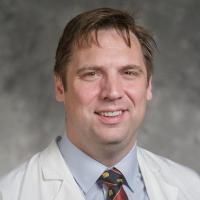"Ultralow-dose" CT Without Sedation in Pediatric Patients With Neuromuscular Scoliosis.
Date
2024-08
Journal Title
Journal ISSN
Volume Title
Repository Usage Stats
views
downloads
Citation Stats
Abstract
Background
Children with neuromuscular scoliosis undergoing scoliosis surgery face substantial rates of complications. To mitigate surgical risks such as blood loss in pediatric patients with neuromuscular scoliosis, this study focuses on enabling instrumentation planning for their abnormal vertebral and pelvic anatomy and osteopenia. This study assessed the feasibility of an "ultralow-dose" CT (ULD CT) protocol without sedation in pediatric patients with neuromuscular scoliosis who often have comorbid movement disorders. Our prospective quality improvement study aims: (1) to determine if ULD CT without sedation is feasible in this patient group; (2) to quantify the radiation dose from ULD CT and compare it with preoperative spine radiographs (XR); and (3) to assess if ULD CT allows accurate anatomical assessment and intraoperative navigation given the prevalence of movement disorders.Methods
Children with neuromuscular scoliosis underwent spine XR and ULD CT scans. Chart reviews assessed disease etiology and comorbidities. Radiation dose was quantified through Monte-Carlo simulations giving dose indices and effective dose, with statistical analysis done using a paired student's t-test (α=0.05). CT image quality was assessed for its use in preoperative planning and intraoperative navigation.Results
Fourteen patients (5 males, 9 females, average age 14±3 y) participated. One patient needed sedation due to autism spectrum disorder and global developmental delay. The radiation dose for spine XR was 0.5±0.2 mSv, and ULD CT was 0.6±0.1 mSv. There was no statistically significant difference in radiation doses between methods. All ULD CT scans had adequate quality for preoperative assessment of pedicle diameter and orientation, obstacles impeding pedicle entry, S2 Alar-Iliac screw orientation, and intraoperative navigation.Conclusions
ULD CT without sedation is feasible for children with neuromuscular scoliosis. Radiation doses were comparable to standard radiographs. ULD CT provided accurate anatomical assessments and supported intraoperative navigation, proving beneficial despite movement disorders in these patients.Level of evidence
Level 2-Development of diagnostic criteria on basis of consecutive patients (with universally applied reference widely accepted standard).Type
Department
Description
Provenance
Subjects
Citation
Permalink
Published Version (Please cite this version)
Publication Info
Yee, Nicholas J, Carlo Iorio, Nicholas Shkumat, Brett Rocos, David Lebel and Mark Camp (2024). "Ultralow-dose" CT Without Sedation in Pediatric Patients With Neuromuscular Scoliosis. Journal of pediatric orthopedics. 10.1097/bpo.0000000000002786 Retrieved from https://hdl.handle.net/10161/31719.
This is constructed from limited available data and may be imprecise. To cite this article, please review & use the official citation provided by the journal.
Collections
Scholars@Duke

Brett Rocos
I joined the team at Duke University Health from London, UK, where I was a Consultant Adult and Paediatric Spine Surgeon at Barts Health NHS Trust and Honorary Consultant Senior Lecturer at Queen Mary University of London. I completed my surgical training in in the South West of the UK and at the University of Toronto, and am fellowship trained in adult spine surgery, paediatric spine surgery, orthopaedic trauma surgery, research and healthcare management.
I am driven to support patients at every stage of their care, from clinic assessment, through surgery to discharge. Making sure that every person, adult, child, family or friend understands what’s wrong, helping them to choose the right treatment for them, and what the recovery will be like is an important priority.
My research activity focusses on finding effective new treatments for spinal disorders and bringing them to patients. Focusing on spinal deformity, I have led investigations in the UK, Canada and the USA, and I sit on the Global AO Knowledge Forum for Deformity and the Research Grants Committee at the Scoliosis Research Society. I have lectured in North America and Europe about the treatment of spine disorders for the Scoliosis Research Society, Global Spine Congress, AO Spine and Eurospine, and I have worked hard to produce research that improves the care for spine patients wherever they live. Lastly, I review for several orthopaedic journals and I am Deputy Editor of the Bone and Joint 360, a leading publication with a global readership.
Unless otherwise indicated, scholarly articles published by Duke faculty members are made available here with a CC-BY-NC (Creative Commons Attribution Non-Commercial) license, as enabled by the Duke Open Access Policy. If you wish to use the materials in ways not already permitted under CC-BY-NC, please consult the copyright owner. Other materials are made available here through the author’s grant of a non-exclusive license to make their work openly accessible.
